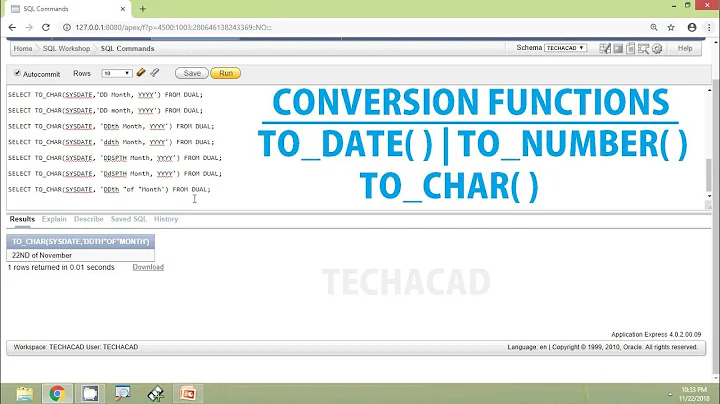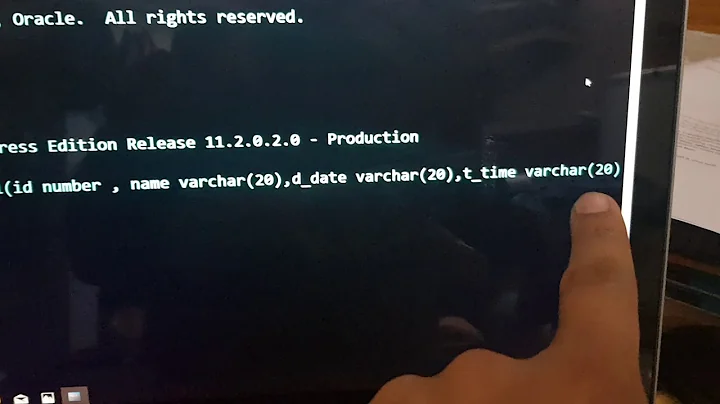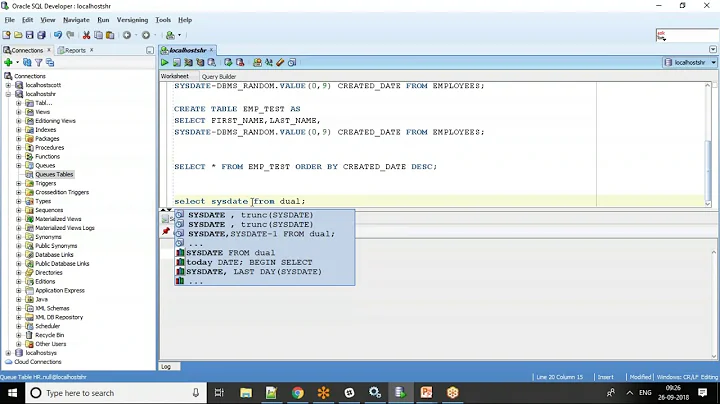TIMESTAMP To DATE in Oracle SQL
Solution 1
You could use TRUNC:
SELECT *
FROM tab
WHERE Create_Date >= TRUNC(SYSDATE,'DD') -- -1
-- or between to dates (using date literals)
WHERE Create_Date >= DATE 'yyyy-mm-dd'
AND Create_Date < DATE 'yyyy-mm-dd'
Solution 2
As it's a timestamp I'd cast the truncated (to midnight) current date to a timestamp for clarity; Oracle will use an index on that column even if you leave it as a date, but it doesn't hurt to make it explicit:
where create_date >= cast(trunc(sysdate) as timestamp)
The trunc() function defaults to truncating to midnight; you can explicitly include 'DD' as a second argument if you prefer (for even more clarity, though some would see it as noise).
If you want a range, say yesterday:
where create_date >= cast(trunc(sysdate) - 1 as timestamp)
and create_date < cast(trunc(sysdate) as timestamp)
If you want to specify other dates then you can use timestamp literals, e.g. to see everything for May:
where create_date >= timestamp '2018-05-01 00:00:00'
and create_date < timestamp '2018-06-01 00:00:00'
Related videos on Youtube
Jude92
Updated on September 23, 2022Comments
-
Jude92 over 1 year
I have a column called Create_Date which has data in the format like
19-JUN-18 10.27.00.000000000 PMand data type isTIMESTAMP(6).I am trying to look at date range like yesterday's date or between two dates in Create_Date without using
TO_DATE(TO_CHAR(P.CREATE_DATE_TIME,'dd/mon/yy'))and entering the value as'19-JUN-18'.I want to use
Create_Date=SYSDATE-1ORCreate_Date=CURRENT_DATE-1instead to filter on yesterdays date. Or UseCreate_Date>=SYSDATEorCreate_Date>=CURRENT_DATEto look at dates greater than or equal to today.Can someone help?
-
Alex Poole almost 6 yearsDates and timestamps don't have any intrinsic format; you're just seeing them however your client decides to format them, often based on your NLS settings. I'd also avoid using
YYin a format model, or relying on implicit conversions.
-







